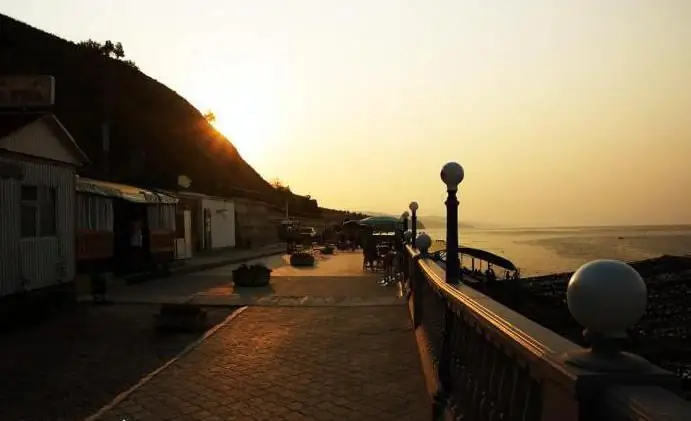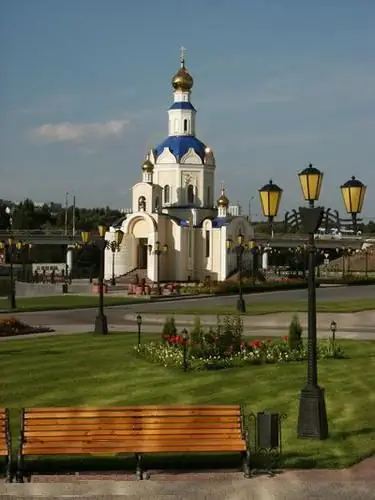- Author Harold Hamphrey [email protected].
- Public 2023-12-17 10:06.
- Last modified 2025-01-24 11:10.
Merida in Spain is an attractive ancient city that is the capital of Extremadura. It is already more than two thousand years old, and it is famous primarily for its amazing architectural monuments that have been preserved since the time of Ancient Rome.
This city will allow you to enjoy the majestic and beautiful architecture of the Roman era, when it was at the zenith of its power.
What is worth knowing about this city?
Merida in Spain is located on the banks of the Guadiana River. The city is the capital of the autonomous community that belongs to the province of Badajoz. Approximately 55.7 thousand people live in the city. The settlement was founded before our era during the reign of the Roman emperor Octavian Augustus. Like most Spanish cities, Merida contains features from several historical eras: Roman rule, the times of the Arab conquests, as well as a medieval knightly atmosphere.
Scientists have calculated that on the territory of the city there is a huge number of monuments of the era of ancient Roman architecture, a variety of statues, paintings and mosaics, which are of great valuefor the historical and cultural memory of mankind. In 1993, the city received the status of "Protection of Humanity" from the world organization UNESCO.

History of the city
Merida in Spain was founded in 25 BC. e. Initially, the city was called Emerita-Augusta and was the capital of the province of Lusitania. The settlement received this name from the Latin word “veterans”, as those warriors settled here who helped to recapture this territory from the Basques and Cantabri for the sake of the Roman throne. Thus, the emperor decided to thank his loyal legionnaires for their valiant service.
The soils around the settlement were fertile, and the planted olive orchards were impressive in their appearance. This attracted many residents from all over the county to move to Emerita. The city developed and expanded, becoming more and more influential and we althy. Already in the 4th century, during the reign of Emperor Constantine, it became one of the most influential settlements in all Spanish territories.
Since the beginning of the 8th century, the history of Merida in Spain is no longer so carefree. The armies of the Arab conquerors poured into the Iberian Peninsula. For almost five hundred years they have been the masters of this city. Many monuments and buildings created by the Romans were destroyed and smashed. Often the buildings were dismantled for building materials in order to build mosques or other buildings with their help. For example, on the ruins of a dilapidated fortress, an Arab Alcabas was erected, which could survive to this day.
In the 13th century, King Alfonso IX of Spain conquered from the Moorscity. After that, the knightly order of St. James was located here. In the 15th century, this once large and prosperous city again turned into a modest provincial settlement. Fortunately, King Philip of Spain was an ardent admirer of the history of Ancient Rome, so he tried his best to preserve the cultural monuments that remained from that era. In 1560, according to his decrees, the popular architect Juan de Herrera carefully began to study the Roman heritage that remained on the territory of the city and the surrounding area.
The events of the Napoleonic battles, as well as the industrial revolution, left a very unpleasant imprint on the appearance of the city. However, now you can come to Spain in Merida to relax and enjoy the view of majestic architectural monuments.
Cultural heritage of the city

Events of a thousand-year history did not spare the buildings of the city. It is not at all the same as it was during the construction or during the time of the Arabs living here. Nevertheless, the city still managed to save here a large number of various architectural monuments. Outside the city, you can often find excavations and research teams that explore the rich history of the settlement. Almost all the items found are sent for study to the National Museum of Roman Art, which was created by the architect Rafael Moneo. Inside are statues of gods and emperors, mosaics, household items of the ancient Romans, Arabs and knights, as well as jewelry and other various cultural artifacts.
Bridge over the Guadiana

The bridge, built in the times of the Roman Empire, is of great historical value. He helps to cross to the other side of the Guadiana River. The bridge was made of hewn granite during the reign of Emperor Trajan. Initially, the length of the bridge was 755 meters and it consisted of 62 spans. However, only 60 spans have survived to this day. However, this number is quite enough for it to be called the longest bridge that has survived to our time.
Across the bridge you can reach another attraction in Mérida, Spain. This is a large Alcazaba fortress that was built by the Arab conquerors in the 9th century. The bridge is quite suitable for movement on it, but only on foot. Thus, it is possible to save this design for a longer time. Along the Guidiana River, you can also watch the amazing Los Milagros Aqueduct.
Bridge over the Albarregas

In the city of Merida in Spain there is another ancient unique bridge. It is thrown across the river Albarregas. A bridge was erected at the beginning of our era and it was necessary in order to transport the mined silver from the mines to the metropolis. The bridge was an important link in the so-called Silver Road. The length of the structure is only 100 meters, which is less than that of its counterpart in the city. However, this does not prevent the bridge from being one of the most beloved and preferred places for walks and meetings among the local population.
Arch of Trajano
Merida - "Roman Spain", as this city is often called. Hereso many buildings of ancient Roman culture have been preserved that it is in no way inferior even to some Italian cities. One of these buildings is the fifteen-meter arch of Trajano. It is located on the main street of the city. Previously, the arch was used as a city gate and was made of wood. But already in the II century, it was rebuilt using granite slabs processed using a special technology.
Temple of Diana
A very important monument in the city, which dates back to the times of the Roman Empire, is the Temple of Diana. It was built at the beginning of the II century AD. It was a religious building, because it was supposed to ex alt the power and glory of the emperor. The columns of the temple impress with their beauty, which are excellent examples of the delightful school of Roman architecture.
In the 18th century, the temple ceased to be the property of the city authorities, passing into the possession of the Countess de Corvos. She used the temple during the construction of her own palace. Fortunately, she did not make any changes to the temple itself.
Old Theater

You can still feel this unsurpassed theatrical spirit inside the theater and amphitheater of the city. These two buildings were able to survive to this day in almost pristine condition. The theater impresses with its majestic size and beauty. The wall is thirty meters high, huge columns made of marble, its perimeter is decorated with statues of ancient gods and Roman rulers. Up to 6,000 people fit inside.
Every year in July there is a festivalclassical theatre. This is a unique spectacle. Plays are again heard on the ancient stages, the heroes of Seneca, Euripides and Sophocles return to this haven of theatrical muses.
Merida Amphitheater

There is also an amphitheater not far from the theater. Unfortunately, it is already in a dilapidated state. It was built in the eighth year BC. Gladiatorial battles were often held here, as well as terrifying battles of people against wild predators. Periodically, chariot races and horse races were held here.
Attractions in the area
The city is located in the central part of the Autonomous Community of Extremadura. From here it is very easy to get to the southern regions, where the picturesque Parc Natural de Cornalvo and the Sierra Bermeja are located. This natural reserve protects many rare plants and animals living in this area.
You can take the train to the capital of the Autonomous Community. Badajoz and Merida in Spain are famous for their amazing architecture. The historic center of Badajoz is completely surrounded by the still strong city wall, and in the central square of the city we recommend that you familiarize yourself with the Cathedral of St. John the Baptist.
Reviews about Merida (Spain) are always very pleasant. It is beautiful here, picturesque lands, and people are friendly and kind.
How to get to the city?

Merida is located at the transport hub Madrid - Lisbon, which is connected by a network of railways. Thus, even withouttransfers here you can get from almost anywhere.






